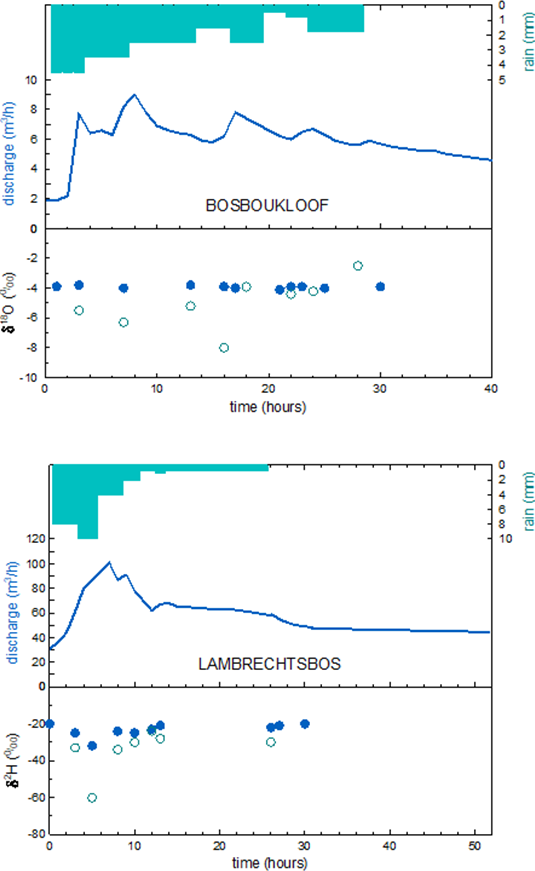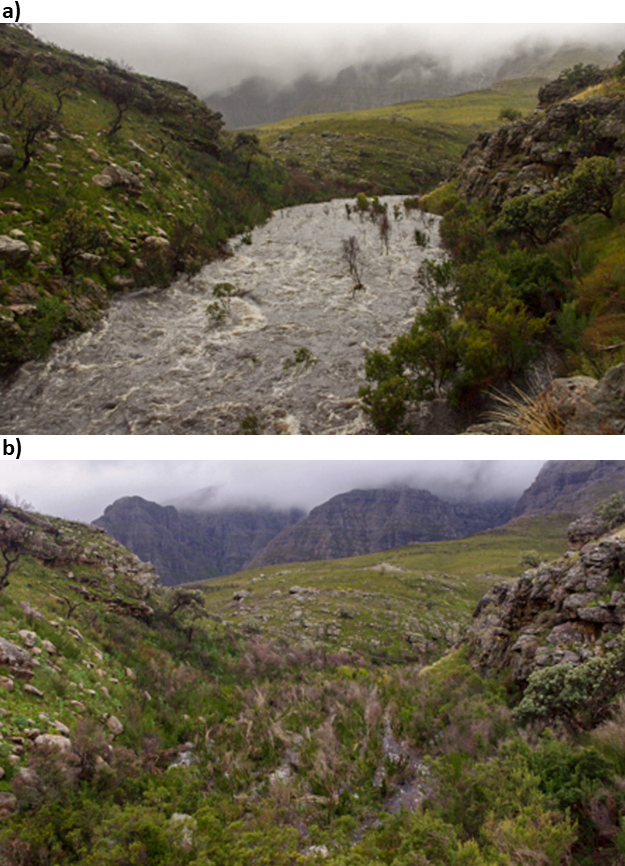7.5 Piston Flow of Groundwater During a Storm
Midgley and Scott (1994) conducted a study of streams in the Jonkershoek area near Cape Town, South Africa, where they collected stream water and precipitation samples simultaneously. Interestingly, they found that although the streamflow rose as the rain event proceeded, the stable isotope composition of the stream water did not match that of the rain (Figure 38).

Figure 38 – Stable isotope data for stream water (solid circles) and precipitation (open circles) in relation to a precipitation event and associated streamflow. The lack of correspondence of the streamflow isotope composition to the precipitation suggests groundwater as the source of streamflow, especially at Bosboukloof where the stream discharge isotope composition is steady. Lambrechtsbos stream water shows some change in isotope composition toward the isotopic composition of the precipitation early in the precipitation event, suggesting either runoff or recent interflow is contributing to the total streamflow during that period (after Midgley and Scott, 1994).
Using the stable isotope compositions and a mass balance approach, they determined that < 5 percent of the streamflow was direct precipitation runoff. They did not take groundwater samples, but rather assumed that the streamflow prior to the rain event was purely baseflow and therefore representative of the groundwater. As discussed in Section 6.5 “Hydrograph Separation”, this assumption is not always valid. Nonetheless, they concluded groundwater was being driven, in a piston flow fashion, by the recharging precipitation, towards the stream and discharging at increased rates during the precipitation event (Figure 39).

Figure 39 – The Elandspad River, Western Cape, during a) and after b) the passage of a cold front of the South Atlantic Ocean in July 2012. The two pictures were taken 16 hours apart. In the nearby Jonkershoek catchment, Midgley and Scott (1994) found stable isotopes of the flood flow matched that of groundwater and not precipitation, suggesting that rapid increase of baseflow from fractures in the quartzite of the Table Mountain Group were largely responsible for the flood peak.
